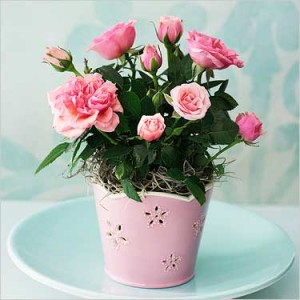
Indoor rose flowers how to care. Home rose after purchase
A rose in a pot can be a wonderful gift to yourself or to another person. Unlike garden cut flowers in a vase, whose age is short, indoor roses with proper care will decorate the room for more than one season.
The problem is that few people know what conditions home miniature roses need. After all, to these beautiful flowers inapplicable rules of care for their "sisters" from the garden, and also general information about growing most indoor plants. Yes, growing a bright fragrant miracle in a pot on the windowsill is not so easy. But armed with knowledge everything will definitely work out even for beginners!
Flower care after purchase
So, you were presented with an indoor beauty, or you yourself decided to please yourself with the replenishment of your collection of flora. Amazing. Now the question arises as to What do we have to do from a newly acquired flower so that he feels great in the new conditions and further pleases with abundant flowering. First of all, the rose should provide a period adaptation- put the pot in a good and fairly warm place, ideally - on the southeast or south window. Replant the plant immediately not worth it because he needs to get used to the new room.
If the flower is still very young, then the first buds need to remove, in return for which you will receive a gorgeous flowering bush. You should also pinch the stem over the most developed bud - this will contribute to the appearance a couple of shoots, on which you then need to pinch the stems. When the shoots of the third turn appear, let the plant bloom in full swing; besides, it will very abundant.
At the end of winter they usually do forming pruning the whole bush to improve the decorative qualities of the plant.
With successful adaptation, if there are no problems, the indoor beauty can be transplanted into a new container 1.5-2 weeks after purchase. The pot should be selected 4-5 cm larger in diameter than the store one, and deeper, preferably with holes on the bottom for ventilation, with mandatory drainage. The transplant needs to be done along with a clod of earth on the rhizome and trying do not hurt fragile roots.
The issue of soil is easily solved. As a rule, in the store you can find a substrate designed for indoor roses. If not, then make it yourself from sand, turf and humus in the ratio 1/1/4. It is important that the soil is moderately moist and well loosened.
After transplantation, it is required to spray the leaves and put the plant in shaded corner. Then transfer the rose back to the windowsill and care for it as usual.
Basic rules for keeping room roses
The maintenance of a home rose will not take much time and effort if you provide it with optimal conditions  content. Since this flower grows in the middle lane, the microclimate in the room must be appropriate.
content. Since this flower grows in the middle lane, the microclimate in the room must be appropriate.
Lighting- intensive. But on hot summer days, it is recommended to shade the window to avoid overheating of the plant from direct sunlight and burns. At the end of autumn and winter, roses need to be illuminated with phytolamps, thereby artificially lengthening daylight hours.
Temperature- Moderately high in summer and cool in winter. The plant safely tolerates heat up to 26 degrees, but only with abundant watering and moisture. Overdrying of the soil leads to overheating of the roots, cold - to their freezing. The optimal temperature range for keeping is 16-22 degrees, and in winter it is better to approach the lower mark. Small temperature fluctuations are not dangerous for roses, but, on the contrary, harden them and stimulate growth.
Watering- carried out only under the very root and warm water, settled for at least 48 hours. How often you need to water depends on the condition of the soil: the top layer should dry out slightly. Excess liquid is detrimental to roses, especially during the dormant period. Therefore, in winter, the procedure should be repeated no more than 1 time per week. In the spring, with the appearance of buds, the intensity of watering is gradually increased. In summer, water is required most of all, but it is not necessary to allow the liquid to stagnate in the pan. After flowering, watering is again reduced.
top dressing- universal mineral fertilizers or mullein solution. In winter - no more than 1-2 times a month, in summer - weekly. When the plant reaches an "advanced" age, additional foliar top dressing can be applied.
To maintain a decorative look, a bush with roses will need prune every fall, or spring. With a sharp knife, shoots located inside the bush are removed, as well as all thinned, dried and frail processes. Be sure to leave 6-7 strong healthy shoots, growing well, but each of them is shortened by a third, so that 5-6 eyes remain on each.
Why does a flower dry?
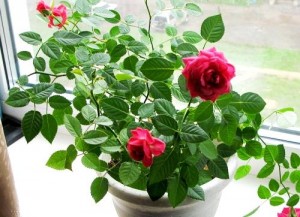 Drying of buds in domestic roses is a sign that the plant stressed out due to sudden changes in conditions environment. It is no coincidence that in stores these plants are wrapped in a transparent bag, which not only acts as protection against damage, but also retains a special microclimate T.
Drying of buds in domestic roses is a sign that the plant stressed out due to sudden changes in conditions environment. It is no coincidence that in stores these plants are wrapped in a transparent bag, which not only acts as protection against damage, but also retains a special microclimate T.
Often, after the flower is brought home and the package is removed from it, the rose experiences a shock, which shows In a similar way. In addition, you can accidentally buy a plant inside which dry flowers were already hiding, but were invisible, thanks to the "cunning" packaging.
But dried buds are not the death of a rose. The situation can be corrected so that the plant not only exists safely, but also pleases with magnificent flowering. All dry flowers, leaves and other areas must be cut with the utmost care. The air will need to be intensively moistened, and also ensure that a fungal disease does not appear, since the damp microclimate in commercial polyethylene is very conducive to this. In which case the plant is needed process immediately antifungal agents.
Drying of flowers can also lead to nutritional deficiencies. Feed regularly and avoid too dry indoor air.
What are the main reasons why leaves fall?
A problem such as loss of leaves, in most cases, is observed in the first weeks after acquiring a rose in a pot, but it can also occur when care errors. There are the following reasons for the fall of the leaves of this plant:
- Change of microclimate and light regime after purchase. It is necessary to create suitable conditions;
- Planting several plants in one pot by the manufacturer for a more attractive presentation. Plants will have to be planted in different containers;
- Overdrying of the earth, untimely transplanting into a new pot;
- Deficiency of magnesium, nitrogen and iron due to insufficient feeding.
As a rule, before leaving the plant, the leaves may turn yellow, turn brown, curl up into a tube, so that be careful to any negative change in appearance homemade rose. To identify the exact cause, one should gradually correct mistakes flower content and continue to try to avoid them.
Before purchasing seedlings, you need to prepare for the fact that caring for a luxurious flower requires more attention than others. houseplants. If you follow the recommendations of experienced gardeners and create the conditions necessary for growth, you can achieve an unsurpassed result, ensuring lush flowering of roses. In favorable conditions, rose bushes bloom every 8-9 weeks.
Indoor rose requires more attention than other houseplants.
Some try to grow a bush from an ordinary flower taken from a bouquet. However, for growing indoors, the following types of flower are recommended:
miniature roses
Bushes of this type reach a height of 30 cm. Small flowers are collected in inflorescences. Plants have dull leaves that may have a slight odor. By color scheme may be varied. Bushes bloom in spring and summer.
The most popular variety among gardeners. On the open space longer specimens are grown, and varieties up to 50 cm are used for indoor rose gardens. Abundant flowering is quite long. Flowers have a rich aroma.
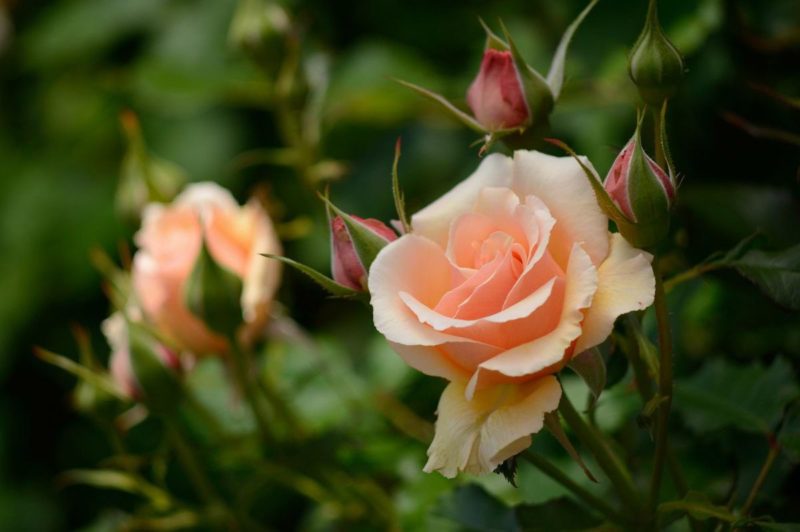
Tea rose is the most popular variety among gardeners.
A feature of this type of roses is the absence of the need for a dormant period. Plants bloom almost all year round. Varieties of this type are unpretentious and compact. Plant height does not exceed half a meter.
A few secrets...
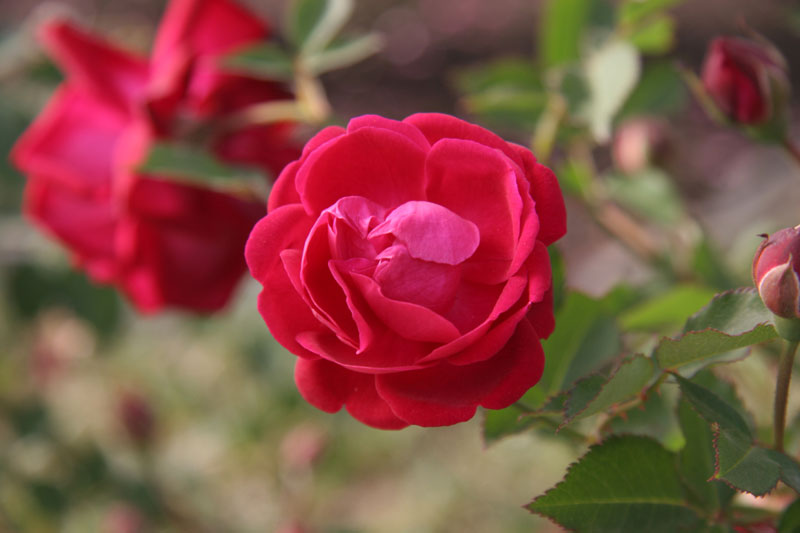
Plants bloom almost all year round.
The flowers of the plant, like the foliage, are quite small, but have a pleasant aroma. Flowers can be pink, red or white in color.
This variety is highly branched with abundant flowering. The bushes are strewn with velvet flowers, which are collected in small inflorescences. They can be cream, pink or carmine.
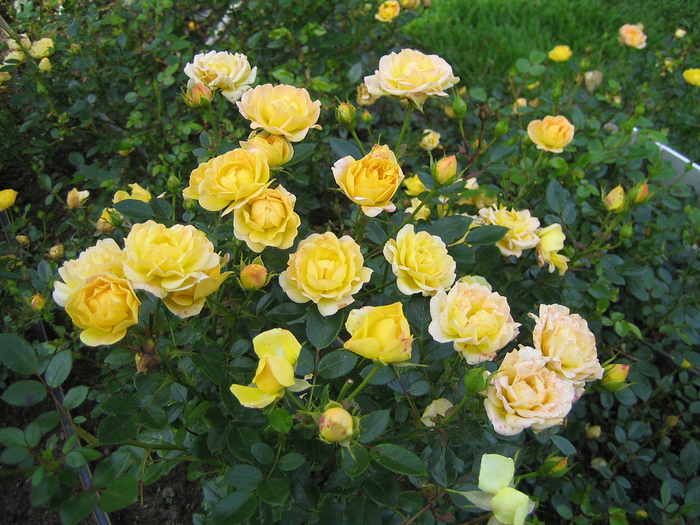
The bushes are strewn with velvet flowers, which are collected in small inflorescences.
Growing features
The frequency of flowering plants directly depends on the conditions that are created on the windowsill. The flower needs sunlight. However, overheating must not be allowed. For placement, the optimal location of roses in pots is a window sill in the western or southeastern part of the apartment. In summer, it is better to take roses to the balcony (terrace), but providing it with shading from direct radiation. You can plant a bush in open ground, returning to the room with the approach of cold weather.
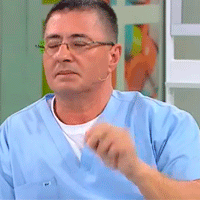
Temperature
The optimum temperature range is 20-25 degrees.
In winter, the rose should be placed in a cool place with a temperature of 10-15 degrees. You can not place a flower near and their electrical counterparts. Small average daily temperature changes will be beneficial, but drafts are detrimental to the plant.
The air should not be dry, so it is better to use a spray bottle to periodically spray the leaves of the plant. It is enough to carry it out twice a day. If the plant is located in a cool place, you can not carry out daily spraying, but you can arrange short showers to remove dust from the leaves. In sunny weather, it is better not to spray, so as not to provoke rotting.
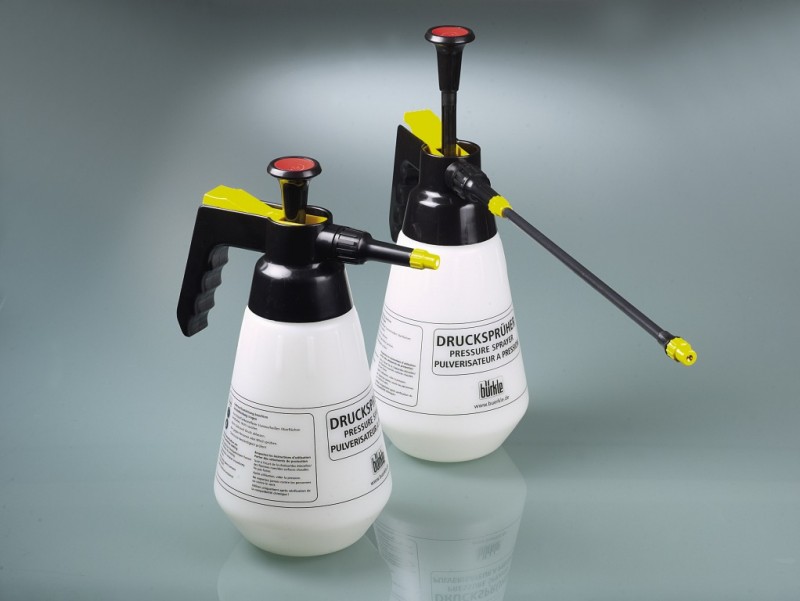
The air should not be dry, so it is better to use a spray bottle to periodically spray the leaves of the plant.
Irrigation Features
Growing roses at home requires watering adjustments. Watering should be carried out as needed. As soon as the soil is dry, it needs to be watered. For this, settled water is used, which is periodically poured into the pot tray. Watering during growth and vegetation is especially important.
However, you should not overdo it with moisture. Since the soil can turn sour in a flower pot. To prevent this from happening, an hour after watering, it is better to drain the water from the pan.
The rose pot should be spacious and have drainage holes. A layer of pebbles is laid at the bottom of the pot, humus or peat, sand (clay) and black soil are placed on top. This sequence is considered optimal for the healthy development of the plant.
The composition of the soil is important: the content of peat or humus should be about 50%. sand - 15%, chernozem - 20%.
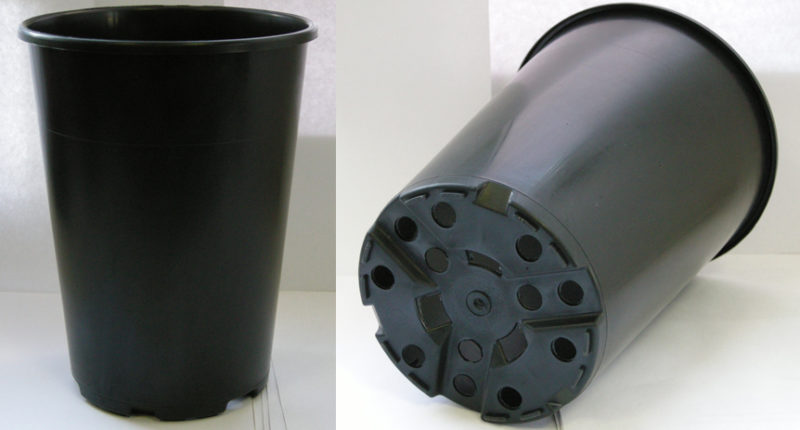
A lush rose bush on the windowsill is the pride of every grower. In order for your indoor rose to bloom and develop harmoniously in time, do not forget to cut it off in time. Pruning stimulates the growth of new branches, which in the future will also have rose buds. Of course, at first a cut rose bush does not look so decorative, but this procedure is vital for your rose, because this is how the plant rejuvenates.
Listen to article
What do you need to properly prune roses?
Secateurs, knife, water, soil mix. To begin with, you must determine which variety your indoor rose belongs to, because the method and frequency of pruning depends on this. So a tea rose is usually cut into 3 eyes. main meaning pruning roses is as follows: to stimulate the growth of side shoots, if the shoots of the rose are strongly extended and stop bushing. Each florist forms the silhouette of a bush to his taste.
It is best to prune a rose in March-April, when the flower has not yet fully woken up and the buds have not yet blossomed. To the attention of amateur flower growers: timely pruning accelerates the beginning of flowering of a room rose.
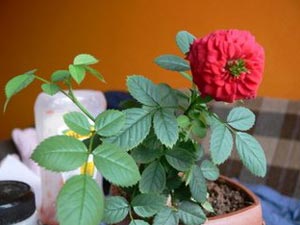 For pruning, take only sharp tools, otherwise the cut will turn out to be torn, and this can damage the plant. Make a cut 5 millimeters above the kidney and at an angle of 45 degrees in the direction of the eye.
For pruning, take only sharp tools, otherwise the cut will turn out to be torn, and this can damage the plant. Make a cut 5 millimeters above the kidney and at an angle of 45 degrees in the direction of the eye.
Start pruning with thinning, so you will see what needs to be corrected and where. First of all, old, damaged or diseased shoots are removed, then, if necessary, we remove the shoots growing inside the bush. Shoots that do not have an apical bud are also removed.
Basic rules for pruning indoor roses:
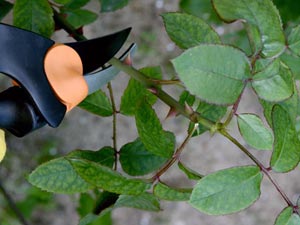
Propagation of roses by cuttings is a separate topic.
Decorate loggias and balconies, windows of houses. All summer they delight the owners with their lush flowers. But in order for the next year the plant to also bloom abundantly and for a long time, it must be properly cut for the winter, leaving only a stalk from each stem. Autumn pruning is carried out in order to strengthen the plant and its immunity before the upcoming wintering.
In addition, pruning for wintering allows you to rid the plants of unnecessary parts for which she does not have to spend energy. A rose cut off before the onset of winter forms more buds in spring, which means that flowering will be plentiful. After pruning for the winter with the onset of a new period of active growth, the emerging young shoots will be stronger.
In autumn, pruning is necessary for any roses, it contributes to a better wintering and reduces the likelihood of diseases. Pruning has a positive effect on flowers.
- Provides better access to air and light. Densely growing shoots are poorly ventilated, so the likelihood of developing rot and other diseases increases.
- By removing old and diseased shoots, the plant directs energy to the development of young stems. In addition, old shoots take away some of the nutrients that could be supplied to young and strong stems in greater quantities.
- Uncircumcised roses give all their strength to the nutrition of the stem, therefore, this affects the quantity and quality of flowers. If you cut the tops of the stems for the winter, then the root system becomes hardier and increases the survival rate of the plant.
- All unripe shoots and buds are pruned for the winter. This measure prevents decay and the development of diseases.
- Pruning plants before winter allows roses to start active vegetation in time in spring and not be late with flowering.
Trimming Rules
To properly prune indoor roses, you must first prepare the tools and the plant.
- Before cutting room or garden rose, you need to familiarize yourself with the characteristics of the flower variety. Different varieties are pruned differently. Some are subject to frequent pruning, or complete removal of shoots, while others are cut only small shoots.
- Decide on the purpose of the formation. This can be when the plant hibernates, spring, promoting active growth and flowering, or shaping pruning, the purpose of which is to give the bush a neat appearance. You can trim the stem to get a cutting for propagation.
- Pruning tools must be sharp, otherwise ragged cuts will remain on the stems, from which the plant may die. Sections are made at an angle and slightly higher than the last remaining kidney. The cut line is made so that it is directed towards the eye.
- First, thinning pruning is carried out, and then the main one. Thinning pruning allows you to shape the bush by removing excess shoots. This contributes to better ventilation and the distribution of nutrients between healthy and desirable shoots.
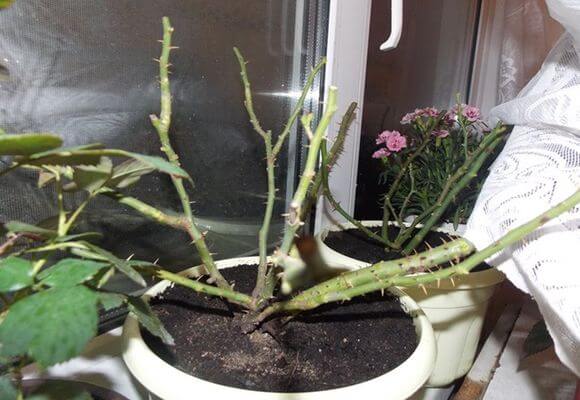
pruning
Pruning before wintering is necessary in order for the plant to winter well and the dormant period to pass successfully. Removing most of the stems allows the plant to accumulate strength for spring growth, in addition, weak or diseased shoots take some of the nutrition onto themselves, and at the same time do not allow a large number of buds to form. Leaving the bush uncut, greatly affects both the decorative qualities and the health of the plant. Weak branches are more likely to infect diseases. To prune roses in the winter correctly, you need to follow a few points.
- Five of the strongest and healthiest stems are determined on the bush, and the rest must be cut with a pruner. The diameter of each such shoot should be at least 1 cm, there should not be many branches, and the color should be dark green.
- On each of these shoots, five buds are noted, starting from the bottom. Then you can start cutting. You need to trim the stems quickly and in one motion so as not to damage the bark and not break the stem in the middle.
- Then determine the upper kidney, which must necessarily be external. From this kidney, an indent of 1 cm is made and the stalk is cut so that the slope is inward. This condition must be observed so that moisture does not linger on the cut.
- The middle of the cut should be white, this is an indicator that the stalk is healthy. If the middle is brown, then cut the rose shorter. The main principle of pruning roses is the ratio of the length of the root, and the size of the aerial part. They should be roughly equal. Subject to this condition, the principle of plant nutrition will not be violated.
- In this way, all the necessary stems are cut, and the sections on them are treated with an antimicrobial solution. This will help protect the stems from the penetration of pathogenic microbes inside.
When pruning roses, it is better to use the Lunar calendar and do this procedure in accordance with it. Roses for the winter need to be cut to the phase of the growing moon. It is believed that this way the plant will more easily tolerate pruning and will not get sick.
Pruning in this way can be done not only on indoor roses, but also on garden ones. After this procedure, garden specimens are prepared for the winter.
Care for roses after pruning
Garden roses are prepared for winter in early autumn. To do this, they clear the ground under them, remove cut stems, dried leaves and other debris. The earth is dug up and bushes are hilled. The height of the earth pile should be at least 20 cm. After that, when the first and persistent colds come, the bushes cover. To do this, they build shelters for the winter, consisting of spruce branches, cardboard shields and boards. Cover types may vary.
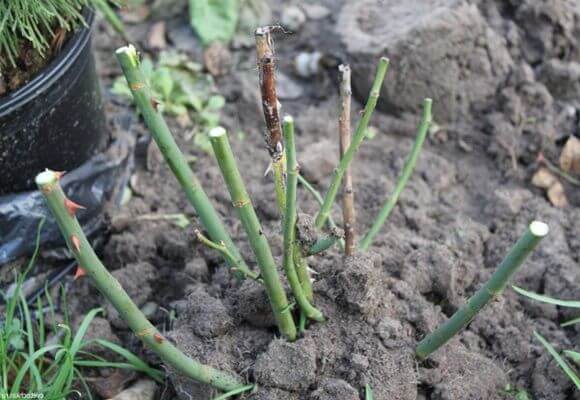
Temperature regime
Indoor roses after the pruning procedure are cleaned in a shaded place in a cool room. The temperature should be reduced to 10-15 degrees. If the apartment has a cool room, or an insulated loggia, where the desired temperature is kept, then the plant is taken there. If not, then you can put the pot on the north window, and fence off the place where it will stand with a film from the room. You can put pots between the frames if the windows are of the old type. In winter, the rose will not grow, and since it is devoid of almost all leaves, it needs minimal watering.
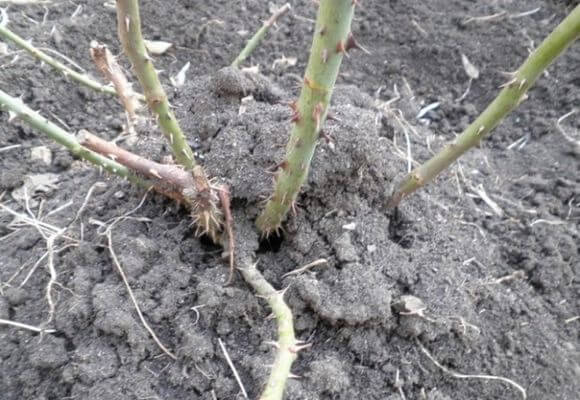
Watering and humidity
Watered so that the soil in the pot stood dry for a couple of days until the next watering. Waterlogging of the soil should not be allowed, otherwise, in a cool and humid climate, bacteria and diseases will begin to develop, the root system will begin to rot. Under such conditions, it may appear, characterized by a white coating on the stems and leaves. Drafts should not be allowed in the room, they provoke the development of rot. Sometimes you can spray the plant with a spray bottle. When the air in the house is dry, you can put the flower pot on a damp tray with gravel or pebbles, and make sure they are always wet. Feeding is also stopped.
Properly and timely pruning of roses allows you to increase the number of flowers, their quality and improve the decorative appearance of the plant.
Proper pruning of indoor hibiscus and the formation of its crown Proper pruning of ficus Benjamin and the formation of its crown
Add site to bookmarks
How to cut house rose in a pot
- Why else do you need to prune a home rose?
- Types of pruning home roses
- How to trim?
- Time to prune indoor roses
- Additional Tips
How to prune a house rose in a pot? This question sooner or later arises even among those who have just begun to get involved in indoor roses. In a flower shop, we get a beautifully formed bush or stem tree, but over time, the rose grows and loses its shape. Don't get upset if this happens. Restoring the shape of a flower with pruning is not at all difficult.
If the rose is not cut off, the rose grows, which spoils its shape.
Why else do you need to prune a home rose?
Pruning rose bushes is an operation of paramount importance, it gives the plant a harmonious and graceful look, guarantees excellent flowering every year, helps to avoid intertwining and tangling of branches, as well as getting rid of overgrown, frail or dead branches prone to diseases and pests.
On young rose bushes, it is useful to do the so-called sanitary pruning, best of all in spring or autumn, although theoretically it is possible at any time of the year. Sanitary pruning will allow you to get rid of not only dead or damaged branches, but also from too weak shoots that are cut just above the main branch.
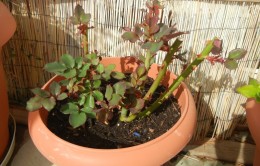
Weak or strongly interfering processes are usually cut off.
Shaping pruning helps to maintain or give the desired shape ornamental plants. Rejuvenating pruning, which is done at intervals of several years, is intended to restore vitality to the bushes of a house rose, which have become too tall and thick over time.
Usually such pruning is done in late winter or early spring. All weak branches are removed, and the remaining branches are shortened.
Pruning roses is necessary not only to give the rose a beautiful look, but also to improve flowering. By cutting off the excess parts of the branches, we provoke the appearance of new buds.
In roses, pruning is done mainly to remove old and weak parts of the bush in order to rejuvenate it, stimulate new flowering, and make the plant less susceptible to pests.
Back to index
Types of pruning home roses

- Restraining pruning - needed to give the bush the appropriate size.
- Promoting pruning - to encourage flowering.
- Formative pruning - necessary to give rose bushes the desired shape.
- Apical pruning - done in plants to stimulate the growth of a rose bush in breadth.
- Anti-aging pruning - removal of old branches to rejuvenate the bush.
Back to index
How to trim?

The cut should be oblique with respect to the kidney and be at a certain distance from it. The optimal distance between the kidney and the cut is about 1 cm. It should not be too sharp (45 degrees is better) and is done in the opposite direction from the kidney. And the last thing: the tool must be well sharpened, then the cut will be clean, without burrs, which often contribute to the reproduction of pathogenic organisms.
You need to remove all dead, damaged and tangled branches that interfere with the development of the middle part of the bush. Full pruning involves cutting back all branches to encourage flowering and give the plant the desired shape and size.
Be sure to remove all wilted flowers. The fact is that the energy that the plant spends on withered flowers is not used to give birth to new flowers.
Back to index
Time to prune indoor roses
Pruning is one of the most important rose care practices. It is equally important to choose the right time for pruning. There are three ways to crop:
- short (spring) - remove branches affected by dry air and pests, and shorten healthy branches, which stimulates lush flowering;
- medium (summer);
- long (autumn) apical pruning - remove wilted flowers and stimulate secondary flowering in some varieties.
Winter pruning is done in February-March, when new buds begin to swell on rose bushes. It is very important that the pruning is done before the buds begin to open; if pruned later, it will damage the plant.
Summer apical pruning is done in early August and only for roses that bloom several times a year to stimulate new flowering.
Plants should be pruned whenever possible when the room is not too hot. It is better if the room is cool. At low temperatures, the flow of vital juices in the tissues of the plant slows down, and the damage caused by injury will be minimal.